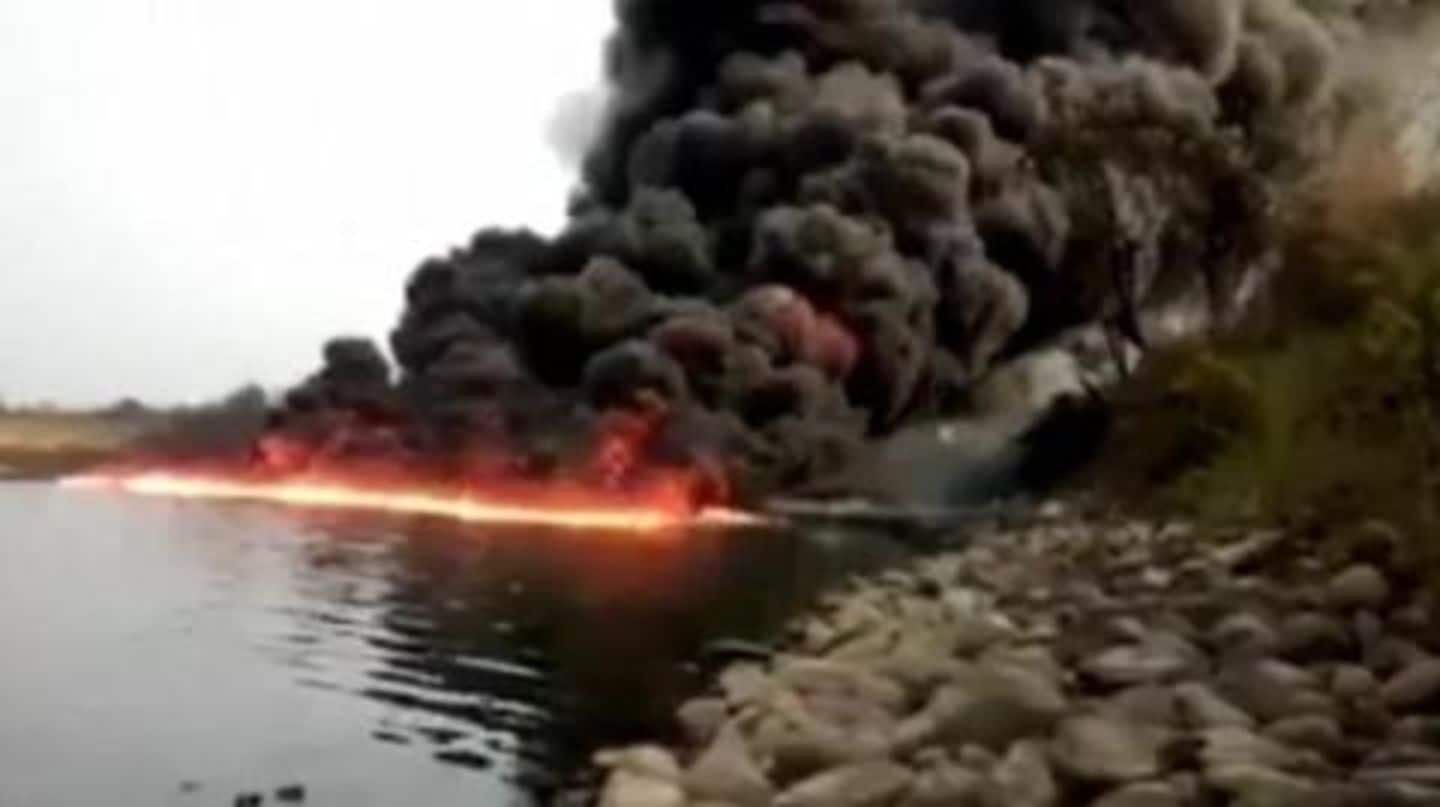
River catches fire in Assam's Dibrugarh; here's what happened
What's the story
On Monday, the shocking visuals of a river in Assam on fire went viral on social media. According to reports, the Burhi Dihing river in the Dibrugarh district of Assam has been on fire for about three days due to leakage from a pipeline carrying crude oil. Locals also accused the authorities of delaying action against the situation. Here are more details.
Details
Fire broke out near Sasoni village
According to India Today, the fire erupted on the Burhi Dihing river at the Digholibil area near Sasoni village of Naharkatia in Dibrugarh. The fire has been burning for three days and continued to burn as of Monday morning, the news portal reported. Residents reportedly alerted local authorities, however, they have failed to control the situation.
Twitter Post
You can watch the video here
Fire on river. Burhi Dihing river caught fire at Naharkatia, Assam, due to oil pipe blast in last three days. But no one cares. pic.twitter.com/lym6NvNye7
— Nandan Pratim Sharma Bordoloi 🇮🇳 (@NANDANPRATIM) February 2, 2020
Reason
Leakage of crude oil from nearby OIL plant caused fire
India Today reported that the fire broke out due to an oil pipeline blast. Locals told the publication that crude oil from the Oil India Limited (OIL) plant in Duliajan was transported through a water pipeline that was connected to the river. Locals suspected that miscreants may have caused leakage with the pipeline in an attempted theft, which led to the fire.
Response
Expert-level committee monitoring situation: Dibrugarh Deputy Commissioner
Dibrugarh Deputy Commissioner Pallav Gopal Jha told The Hindu that an expert-level committee was monitoring the situation and will limit environmental damage. Meanwhile, OIL officials said the visuals going viral are "dated" and the fire is "under control." The officials also explained that instrumentation failure led to a leak on Saturday night, adding that their damage restoration team initiated work the same night.
Quote
'Reverse pressure created in pipelines led to punctures'
An executive in OIL's corporate communications told The Hindu, "Almost 99% of the spillage was on land but the rest fell in a leader drain that is linked to the Burhidihing." Saying that an instrumentation failure caused a valve to stop, the executive added, "A reverse pressure was created in the pipelines and crude spilled from resultant punctures in the pipelines in two places."